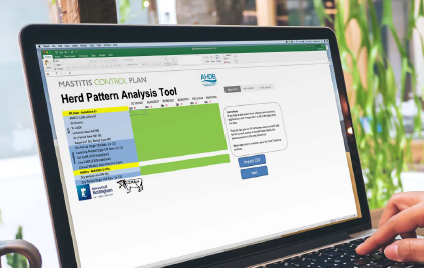Automatic reports on mastitis from a digital development

Dairy farmers are now receiving somatic cell count and clinical mastitis results after each milking through the Mastitis Pattern Analysis Tool (MPAT). The MPAT analyses individual herd data to determine whether the predominant infection patterns is environmental or infectious during the lactation or dry period, as well as the seasonality of infection and heifer infection.
This will allow farmers and veterinarians to work together to identify the pattern of mastitis in their herd and to take the most effective targeted control measures. The stakes are high, as mastitis causes greater economic losses than any other disease affecting dairy cattle production. Speaking about the tool, which was developed at the University of Nottingham with the help of a research team from the Agricultural and Horticultural Development Board (AHDB) and with significant government funding, Jake Thompson, from LLM Farm Vets, part of the VetPartners group, said:
“The great thing about this tool is that both the farmer and myself are sent a report automatically after each milk recording. It allows us to have a targeted conversation about udder health as soon as we have their latest data available. If the mastitis pattern shows there is more of a problem in early lactation from infections picked up from the environment during the dry period, we will then look more closely at how the dry cows are being managed. On other farms, the main current problem may be completely different.”